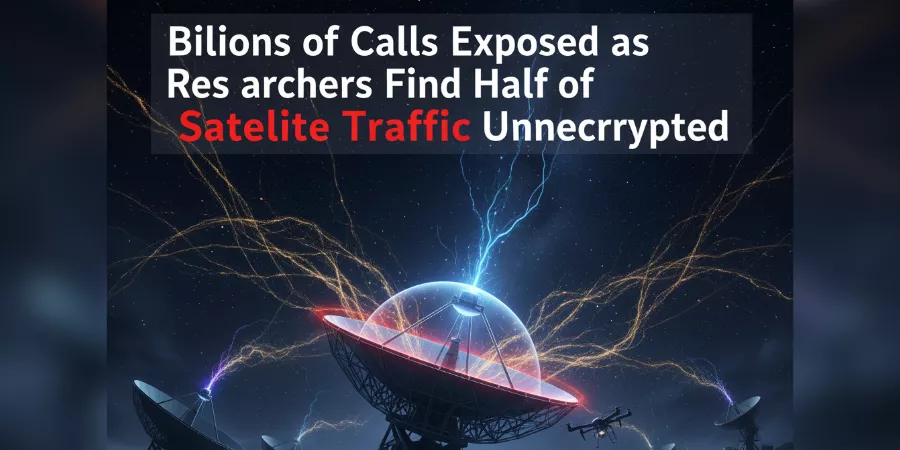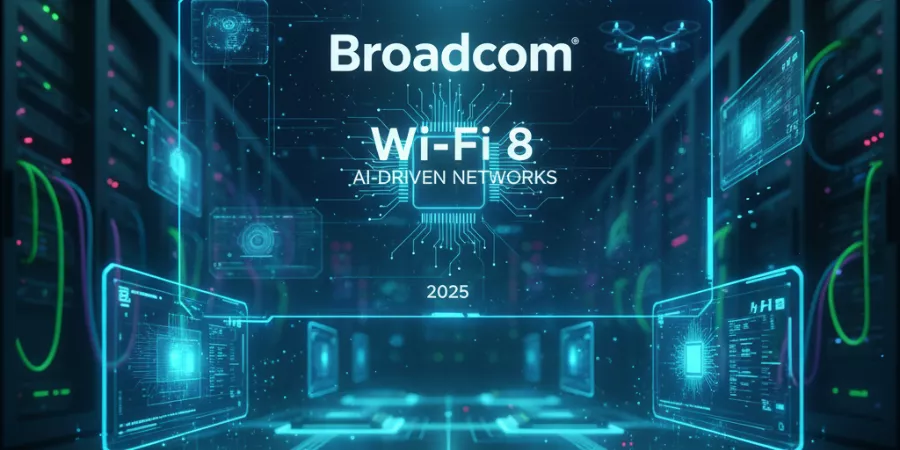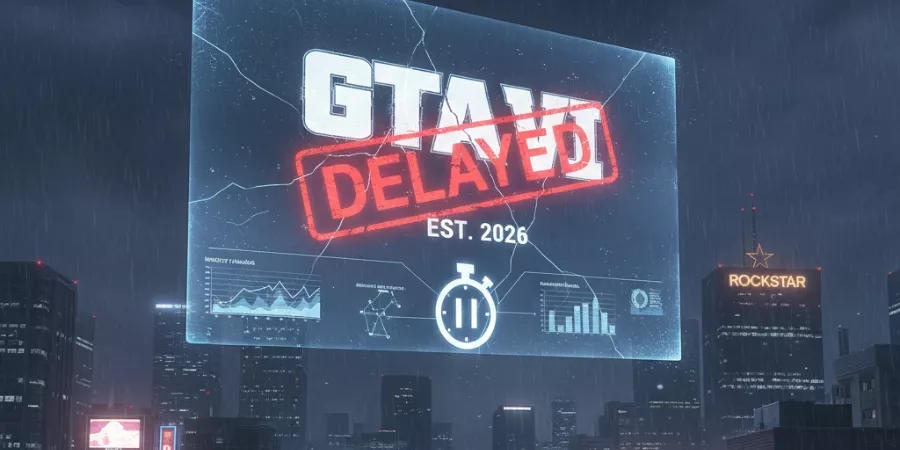Apple’s gaming ambitions present a paradox: the App Store generates more gaming revenue than any console manufacturer an estimated $25 billion annually from mobile game sales and in-app purchases (Sensor Tower, 2024) yet Apple remains a peripheral player in the broader $217 billion global gaming market. Apple Arcade, the company’s premium subscription gaming service launched September 2019 with promises to disrupt mobile gaming through ad-free, high-quality exclusives, has attracted 70-80 million subscribers (analyst estimates based on Services reporting) but remains far below internal targets. According to Bloomberg’s April 2024 reporting, Apple originally projected 100+ million Arcade subscribers by 2023, with ambitious plans to compete directly with Xbox Game Pass and PlayStation Plus. Five years post-launch, Apple’s gaming strategy reveals tensions between its high-margin services focus, its reluctance to cannibalize App Store free-to-play revenue, and fundamental misunderstandings about what gaming audiences value. This analysis examines Apple’s actual gaming performance, strategic missteps, competitive positioning, and whether the company can realistically challenge Microsoft, Sony, and Nintendo’s gaming dominance or if it should focus on maximizing its accidental mobile gaming monopoly.
Apple Arcade: The $2 Billion Experiment’s Mixed Results
Launch Vision vs. Current Reality
Apple Arcade launched with clear ambitions articulated by Tim Cook at September 2019 keynote:
Original value proposition:
- $4.99/month subscription for unlimited access to 100+ exclusive games
- No ads, no in-app purchases, no microtransactions
- “Premium gaming experiences” unavailable elsewhere
- Family sharing (up to 6 accounts)
- Cross-platform play (iPhone, iPad, Mac, Apple TV)
- Offline gameplay support
Target audience:
- Casual gamers frustrated by free-to-play monetization
- Parents seeking child-safe gaming without predatory mechanics
- “Lapsed gamers” who stopped mobile gaming due to low quality
Subscriber Performance and Financial Analysis
Apple doesn’t disclose Apple Arcade subscriber counts, but data sources provide estimates:
Subscriber estimates:
- CIRP (Consumer Intelligence Research Partners, Q2 2024): 70 million U.S. subscribers out of 200 million Apple One bundle subscribers globally
- Sensor Tower (2024): 75-80 million global Arcade subscribers
- Statista (2023 survey): 23% of U.S. Apple device owners have active Arcade subscriptions
Revenue analysis:
- 75 million subscribers × $4.99/month × 12 months = $4.5 billion potential annual revenue
- Reality: ~60% subscribe through Apple One bundles ($19.95/month for individual, $32.95 for family)
- Estimated standalone Arcade revenue: $1.2-1.5 billion annually
- Apple One revenue attribution to Arcade: ~$800 million-1 billion
- Total Arcade contribution: ~$2-2.5 billion annually
Profitability questions:
- Bloomberg (April 2024) reported Apple spends $500 million+ annually on Arcade content licensing and development
- Additional operational costs: Platform engineering, curation, marketing ($200-300 million estimated)
- Break-even or marginally profitable at current scale vs. Apple’s typical 70%+ Services gross margins
Content Performance: What Works and What Doesn’t
Analysis of most-played Arcade titles reveals surprising patterns:
Top-performing games (based on App Store charts, player reviews, developer interviews):
- NBA 2K24 Arcade Edition – Licensed sports game
- Sonic Dream Team – Established franchise
- Hello Kitty Island Adventure – Licensed IP
- Puyo Puyo Puzzle Pop – Established puzzle franchise
- Backpack Hero – Indie deck-builder ported to Arcade
Pattern analysis:
- 7 of top 10 Arcade games are established franchises or licensed IP
- Original Arcade exclusives struggle to attract sustained engagement
- “Premium mobile experiences” message failed to resonate
Developer perspectives:
Anonymous iOS developer (interviewed by GameIndustry.biz, June 2024): “Apple Arcade pays flat fees for exclusivity usually $500,000 to $3 million depending on game scope and studio reputation. For small indies, that’s life-changing upfront capital. But there’s no revenue sharing based on gameplay hours, so once you’ve taken Apple’s money, player engagement doesn’t matter financially. This creates perverse incentives developers optimize for approval and payment, not long-term player retention.”
Rami Ismail (independent developer advocate): “Apple Arcade’s curation process prioritizes Apple’s brand aesthetics over what mobile gamers actually play. They want beautiful, ‘Apple-like’ experiences, but mobile gaming audiences have spent a decade training on free-to-play mechanics. You can’t undo behavioral conditioning with subscription models you need fundamentally compelling content, which requires risk-taking Apple won’t do.”
App Store Gaming: The Accidental Empire
The Real Gaming Revenue Driver
While Apple Arcade struggles with positioning, App Store gaming generates massive revenue:
App Store gaming revenue (Sensor Tower, 2024):
- Estimated $25 billion annually from iOS gaming globally
- 15-30% commission on in-app purchases = $3.75-7.5 billion revenue to Apple
- Represents 60-65% of total App Store revenue
- Gaming generates more revenue than music, video, news, fitness combined
Top revenue-generating mobile games (iOS, 2024):
| Game | Est. iOS Revenue | Developer | Apple’s Take (30%) |
|---|---|---|---|
| Honor of Kings | $1.8B | Tencent | $540M |
| PUBG Mobile | $1.2B | Tencent | $360M |
| Genshin Impact | $1.0B | miHoYo | $300M |
| Roblox | $900M | Roblox Corp | $270M |
| Candy Crush Saga | $850M | King (Activision) | $255M |
The business model conflict:
- Free-to-play games with aggressive monetization generate most revenue
- Apple Arcade positions as “premium alternative” to exploitative F2P
- Yet Apple’s commission revenue depends on F2P success
- Strategic contradiction: Apple simultaneously profits from and criticizes mobile gaming’s business model
Why Apple Can’t Meaningfully Disrupt Mobile Gaming
Developer economics favor free-to-play:
Hypothetical game revenue comparison:
Free-to-Play Model (Typical):
- Development cost: $2-5 million
- User acquisition cost: $3-8 per install
- Conversion rate: 2-5% of players make purchases
- Average revenue per paying user (ARPPU): $40-200
- Lifetime value (LTV) per user: $2-10
- Breakeven: 1-3 million installs
- Success case (top 100 game): $50-200 million annual revenue
Apple Arcade Model:
- Development cost: $2-5 million
- Apple’s flat fee: $500,000-3 million
- Zero additional revenue regardless of popularity
- Breakeven: Achieve Apple’s approval (not player engagement)
- Success case: Apple renews contract for $1-2 million additional payment
For established studios with proven IP, the F2P model offers 10-100x higher revenue potential. Only small indies or prestige developers (who value brand positioning over revenue) choose Arcade exclusivity.
Competitive Positioning: Apple vs. Gaming Platforms
The False Equivalence: Mobile vs. Console/PC Gaming
Apple’s occasional comparisons to Xbox Game Pass or PlayStation Plus reveal fundamental market misunderstanding:
Xbox Game Pass (Microsoft):
- 34 million subscribers (January 2024, Microsoft)
- $9.99-16.99/month depending on tier
- Library: 450+ games including day-one AAA releases (Starfield, Halo Infinite, Forza)
- Revenue: $4-5 billion annually (estimated)
- Value proposition: Access to $70 console games for subscription fee
PlayStation Plus (Sony):
- 47.4 million subscribers (Q2 FY2024, Sony)
- $9.99-17.99/month depending on tier
- Library: 700+ games including PlayStation exclusives
- Revenue: $5-6 billion annually (estimated)
- Value proposition: Classic PlayStation library + online multiplayer + monthly free games
Apple Arcade:
- 70-80 million subscribers (estimated, many via Apple One bundles)
- $4.99/month standalone, $6.99/month for family
- Library: 200+ games, mostly mobile-native experiences
- Revenue: $2-2.5 billion annually (estimated)
- Value proposition: Premium mobile experiences vs. free-to-play alternatives
Why Direct Competition Is Impossible
1. Content Development Costs
- AAA console game: $50-200 million budget, 3-5 year development
- Top mobile game: $2-10 million budget, 6-18 month development
- Apple can’t afford AAA console-quality content at scale for $4.99/month subscription
2. Gaming Audience Expectations
- Console/PC gamers: Expect 40-100+ hour narrative experiences, cutting-edge graphics
- Mobile gamers: Expect 5-15 minute session-based gameplay, convenience over fidelity
- Different audiences, different use cases subscription doesn’t bridge gap
3. Hardware Constraints
- iPhone/iPad thermal management limits sustained high-performance gaming
- Console/PC gaming: Dedicated cooling, discrete GPUs, active performance management
- Apple Silicon impressive for burst performance, unsuitable for 3+ hour gaming sessions console gamers expect
4. Control Input
- Touchscreen gaming fundamentally different from controller/keyboard+mouse
- Complex console games require 12+ buttons, analog sticks, triggers
- MFi (Made for iPhone) controller support exists but <5% of mobile gamers use controllers
Apple’s Gaming Hardware Strategy: Incremental Not Revolutionary
Apple Silicon’s Gaming Potential Underutilized
Apple’s M-series and A-series chips deliver impressive GPU performance:
Comparative benchmarks (3DMark Wildlife Extreme):
- iPhone 15 Pro (A17 Pro): 3,500 score
- iPad Pro M2: 5,800 score
- Steam Deck (AMD custom): 2,400 score
- Nintendo Switch (Tegra X1): 900 score
Apple’s chips exceed handheld gaming devices technically, yet gaming software doesn’t leverage advantages:
Why hardware advantage doesn’t translate to gaming success:
1. Game Developer Economics
- Developing for iOS requires Metal API (Apple-exclusive graphics framework)
- Cross-platform engines (Unity, Unreal) support Metal but optimize for DirectX/Vulkan (PC/console standards)
- Market size: iOS gaming ~200 million active devices; PC/console gaming ~300 million; Android gaming ~2 billion
- Developer incentive: Optimize for larger platforms first, iOS ports afterthought
2. Thermal and Battery Constraints
- A17 Pro throttles after 15-20 minutes of sustained gaming (Digital Foundry testing)
- Battery life drops to 3-4 hours during intensive gaming (vs. 8+ hours video streaming)
- Consumers expect all-day battery, limiting sustainable gaming performance
3. App Store Distribution Policies
- Apple prohibits cloud gaming apps (Xbox Cloud Gaming, GeForce Now can’t operate as native apps)
- Requires each game offered through cloud service to undergo separate App Store review
- Effectively blocks Microsoft, Nvidia, Amazon Luna from competing on iOS
- Protects App Store revenue but limits consumer gaming options
Apple TV 4K: The Failed Gaming Console
Apple attempted dedicated living room gaming with Apple TV:
Apple TV gaming features:
- A15 Bionic chip (2022 model) matches Xbox One S GPU performance
- MFi controller support
- Apple Arcade integration
- 4K HDR output
Market failure reasons:
- $129-149 pricing competes with $299-399 Xbox Series S/PlayStation 5 Digital platforms with exponentially larger game libraries
- Storage limits (64-128GB) vs. modern games requiring 50-150GB
- No exclusive AAA titles justifying dedicated Apple TV for gaming
- Sales estimated at 2-3 million units annually vs. Xbox/PlayStation’s 15-20 million
Apple never seriously marketed Apple TV as gaming platform, suggesting internal acknowledgment of non-viability.
Strategic Options: What Apple Should Actually Do
Option 1: Maximize Accidental Mobile Gaming Dominance
Rather than challenging console gaming, Apple should optimize its actual competitive advantage:
Strategy:
- Improve App Store game discovery – Algorithm currently favors top-grossing F2P; add curated quality recommendations
- Reduce developer friction – Lower commission to 15% for all developers (not just <$1M revenue), improving developer economics
- Invest in tooling – Metal API improvements, better Unity/Unreal integration, performance profiling tools
- Create gaming-specific brand – Separate “Apple Games” identity within App Store, premium positioning vs. generic apps
Financial upside:
- Improved developer relations could increase iOS-first development (vs. Android-first)
- Better discovery increases long-tail game revenue (benefiting Apple’s 15-30% take)
- Estimated $500 million-1 billion incremental App Store gaming revenue annually
Option 2: Transform Apple Arcade into Gaming Netflix
Current flat-fee licensing model doesn’t incentivize quality. Shift to performance-based compensation:
Revised Arcade economics:
- Eliminate upfront exclusivity fees – Developers can launch simultaneously on App Store and Arcade
- Revenue sharing based on engagement – Pay developers per hour of gameplay (similar to Spotify’s streaming model)
- Tiered subscription – $4.99 casual tier (mobile games only), $9.99 premium tier (includes Mac AAA ports)
- Incentivize retention – Developers earn ongoing revenue, creating incentive for long-term support
Projected impact:
- Increased developer participation (lower barrier to entry)
- Higher-quality content (developers motivated by engagement, not just approval)
- Potential subscriber growth to 120-150 million (if content quality improves significantly)
Option 3: Embrace Cloud Gaming (With Concessions)
Apple’s cloud gaming ban protects App Store revenue but limits consumer choice:
Compromise approach:
- Allow cloud gaming apps – Xbox Cloud Gaming, GeForce Now as native apps
- Require Apple payment processing – 15-30% commission on cloud gaming subscription fees
- Maintain security/privacy review – Apps must meet Apple standards but individual game review not required
Strategic benefits:
- Positions iOS as “platform for all gaming” vs. walled garden
- Generates commission revenue from cloud gaming subscriptions ($500 million+ annually if Xbox/Nvidia scale on iOS)
- Addresses Epic Games/regulatory criticism about anticompetitive App Store policies
Why Apple won’t do this:
- Requires acknowledging iOS can’t compete with console/PC gaming natively
- Reduces control over gaming ecosystem
- Internal culture prioritizes control over revenue (even when revenue upside exists)
The Gaming Industry’s Verdict on Apple
Developer and Publisher Perspectives
Major publisher view (anonymous EA executive, via Kotaku interview, 2023): “Apple talks about gaming as strategic priority but won’t make hard choices. They want gaming revenue without gaming culture no violence, no risk-taking, no content that might embarrass Tim Cook on stage. You can’t be gaming platform leader with those constraints.”
Indie developer coalition (Coalition for App Fairness statement, 2024): “Apple Arcade sounded revolutionary but became just another way for Apple to extract value from developers. Flat fees with no revenue sharing means our success doesn’t benefit us financially. Meanwhile, App Store policies prevent us from reaching customers through alternative distribution.”
Competitive assessment (Phil Spencer, Microsoft Gaming CEO, 2023 FTC testimony): “Apple has inadvertently built the largest gaming platform by revenue, but they don’t understand gaming. They view games as content to monetize, not experiences to celebrate. That cultural gap prevents them from competing meaningfully beyond mobile.”
Conclusion: Apple’s Gaming Paradox Persists
Apple’s gaming position five years after Apple Arcade’s launch remains contradictory: dominant in mobile gaming revenue ($25 billion annually from App Store) yet peripheral in gaming culture and influence. Apple Arcade’s 70-80 million subscribers generate $2-2.5 billion annually respectable for most companies but marginal within Apple’s $394 billion FY2023 revenue context (0.6% of total).
The company faces strategic crossroads:
Path A: Accept Mobile Gaming Specialization
Acknowledge iOS won’t challenge console/PC gaming; optimize the accidentally dominant mobile platform through better discovery, developer tools, and reduced friction. This maximizes existing $3.75-7.5 billion App Store gaming commission revenue.
Path B: Genuine Gaming Platform Investment
Commit $5-10 billion to AAA exclusive development, acquire major studio (e.g., EA, Take-Two), build gaming-first hardware (standalone console, VR headset with controller-primary input). This requires cultural transformation Apple shows no signs of pursuing.
Path C: Status Quo Maintenance
Continue Apple Arcade as brand positioning exercise, maintain App Store gaming revenue, avoid substantial new investment. Accept gaming remains valuable but not strategic priority.
Current trajectory suggests Path C: Apple will sustain Apple Arcade at break-even, generate massive passive income from App Store gaming commissions, and occasionally demo games at product launches without fundamentally prioritizing gaming. For a company generating $100+ billion annual Services revenue with 70%+ margins, gaming’s 15-20% margins and high content investment requirements make it strategically unattractive despite revenue scale.
The rumored “unified gaming hub” referenced in speculation serves as microcosm of Apple’s gaming challenge: better organization of existing content (valuable but incremental) vs. fundamental investment in gaming as core competency (transformative but unlikely). Until Apple’s leadership views gaming as cultural phenomenon worth embracing not just revenue stream to optimize the company will remain gaming’s wealthiest bystander rather than competitive force.
















